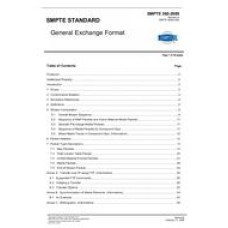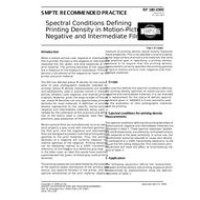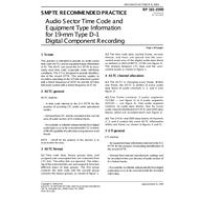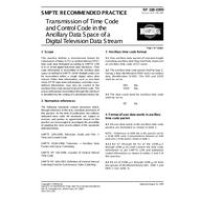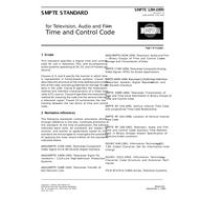SMPTE 360-2009
- Television - General Exchange Format (GXF)
- standard by Society of Motion Picture and Television Engineers,
- Category: SMPTE
$80.00
$40.00
Physical links (data network technology) are not specified in this Standard. Any appropriate physical link maybe used.
Simple clips and compound clips, as defined in this Standard, are specified as alternatives to traditionalapproaches to transferring television programming between storage devices.
This Standard defines two simple constructs for transfer of material:
1) A simple clip format in which all audio, video and time code tracks start and stop coincidentally andwhere the audio and video tracks are contiguous, and;
2) A compound clip format, which is a collection of audio, video, and time code tracks, any of which maycontain several segments, with cut transitions between the segments. Transitions may occur on eachtrack independently of the other tracks.
This Standard is independent of material format, whether compressed or not, and allows material to betransferred across a network before recording has finished. The transferred material specified in this Standardincludes Motion JPEG (MJPEG), MPEG-1, MPEG-2, and DV-based video compression standards, withassociated audio, time code, and user data that may include user-defined metadata. The video, audio, andtime code material is time multiplexed to provide immediate availability at the receiver.
 PDF
PDF
All of our standards document are available in PDF (Portable Document Format), an electronic, downloadable format.You will be able to download the file in your account downloads.
 Multi-User Access
Multi-User Access
After purchasing, you have the ability to assign each license to a specific user.
 Printable
Printable
At any time, you are permitted to make printed copies for your and your members' reference use.

